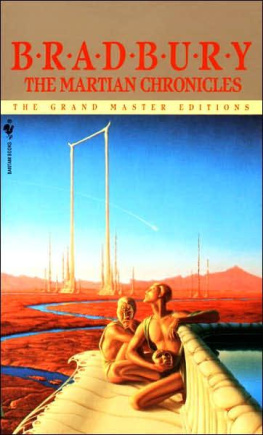This edition first published in 2020 by New Page Books,
an imprint
of Red Wheel/Weiser, LLC
With offices at:
65 Parker Street, Suite 7
Newburyport, MA 01950
www.redwheelweiser.com
Copyright 2020 by Nick Redfern
All rights reserved. No part of this publication may be reproduced or transmitted in any form or by any means, electronic or mechanical, including photocopying, recording, or by any information storage and retrieval system, without permission in writing from Red Wheel/Weiser, LLC. Reviewers may quote brief passages.
ISBN: 978-1-63265-176-1
Library of Congress Cataloging-in-Publication Data available upon request.
Cover design by Kathryn Sky-Peck
Cover photo by NASA
Interior by Jane Hagaman
Typeset in ITC New Baskerville and Lato
Printed in the United States of America
IBI
10 9 8 7 6 5 4 3 2 1
www.redwheelweiser.com/newsletter
Contents
Introduction
M ars, our nearest planetary neighbor in the solar system, is an average of approximately 140 million miles from the Earth. Because the orbit of Mars is erratic, the distance will fluctuate during the Martian year. Not particularly big in size, it is dwarfed by all of the planets (Pluto is now classified as a dwarf planet) except Mercury. At the other end of the spectrum, however, Mars is home to the gigantic Olympus Mons, which is the biggest volcano in the entire solar system. The huge amount of iron oxide on Mars gives it a noticeablefamous, evenreddish color, hence its memorable nickname: the Red Planet. It has a blood-freezing average temperature of 81 degrees Farenheit, and its decidedly harsh atmosphere is comprised almost exclusively of carbon dioxide; aside, that is, from a small amount of water vapor.
There is no denying the fact that dusty, rocky, desert-like Mars is a very interesting world: For one thing, it has polar ice caps. And those ice caps are comprised of water. Yes, good old water; just like ours. Not only that, the amount of water on Mars is huge. And I do not exaggerate when I use the word huge. NASA's current estimates suggest that if all of the Martian water was melted, there would be enough to cover the entire planet up to a height of about 35 meters, which is undeniably amazing. The planet's days are strikingly similar to ours, in terms of length: Mars's days last for twenty-four hours and thirty-seven minutes. Mars's year, however, runs for 687 days.
For millennia, we, the human race, have been intrigued by Mars. Indeed, a good case can be made that we have an absolute affinity to the Red Planetan affinity that dictated the development of early religions and even the world of conflict. As NASA notes:
The Egyptians were the first to notice that the stars seemed fixed and that the sun moves relative to the stars. They also noticed five bright objects in the sky (Mercury, Mars, Venus, Jupiter, and Saturn) that seemed to move in a similar manner. They called Mars Har Decherthe Red One.... Greeks called the planet Ares after their god of war, while the Romans called it Mars. Its sign is thought to be the shield and sword of Mars.
As for Mars, the god, N. S. Gill says: Mars sired Romulus and Remus, making the Romans his children. He was usually called the son of Juno and Jupiter, just as Ares was taken to be the son of Hera and Zeus. The Romans named an area beyond the walls of their city for Mars, the Campus Martius Field of Mars.
Mars was important to the Roman Empire when it came to the matter of something that we, as a species, are all too aware of: warfare. And sacrifice, too, as Patti Wigington states:
Before going into battle, Roman soldiers often gathered at the temple of Mars Ultor (the avenger) on the Forum Augustus. The military also had a special training center dedicated to Mars, called the Campus Martius, where soldiers drilled and studied. Great horseraces were held at the Campus Martius, and after it was over, one of the horses of the winning team was sacrificed in Mars honor. The head was removed, and became a coveted prize among the spectators.
Then, there's the matter of the ties between Mars and the world of science fiction. Take, for example, H. G. Wells's classic sci-fi novel of 1897, The War of the Worlds . It's a story that sees the human race up against an invasion by hostile extraterrestrials that live on the Red Planet. Moving on, there are Edgar Rice Burroughs's classic fantasy tales that chronicle the life of one John Carter. He's a heroic, sword-wielding figure who has all kinds of adventures on faraway Mars, with the first story being published in 1912. Burroughs's novels proved to be incredibly popular with the public of that era. They included A Princess on Mars; Swords of Mars; Synthetic Men on Mars; Thuvia, Maid of Mars, John Carter of Mars; and... well... you surely get the picture.
On October 30, 1938, a radio-version of The War of the Worlds was broadcast on the Mercury Theater on the Air. It was directed by Hollywood legend Orson Welles. So realistic was the drama, it led at least some of the listeners to believe that the Martians really were invading. In 1967, Hammer Film Productions released Quatermass and the Pit, the title of which was changed for American audiences to Five Million Years to Earth. It's a gripping tale of ancient Martians who came to our world millions of years agoand who genetically altered early, primitive humans. And, in a strange and very alternative way, the Martians of the movie are still wielding their extraordinary, almost-supernatural powers in 1960s-era London, England, deep inside the tunnels of the London Underground rail system.
In 1979, NBC broadcast a mini-series based on Ray Bradbury's science-fiction novel The Martian Chronicles. Mission to Mars was a big-bucks movie made in 2000 that starred Gary Sinise and Tim Robbins as astronauts who learnto their amazementthat Mars is not the dead world that so many believe it to be. Then, in 2015, actor Matt Damon took on the role of astronaut Mark Watney in The Martian, a movie that saw Damon's character forced to find a way to survive in the harsh environment of Mars.
Moving away from the domain of sci-fi, there is the matter of the many and varied unmanned missions to Mars that have been undertaken by the United States, Russia, India, Japan, and the European Space Agency. The combined figureof fly-bys, landings, and orbits of Marsis close to fifty. In other words, the world's leading nations in the field of space flight and astronomy have a deep interest in Mars. As a species, it's almost as if we just cannot leave Mars alone, whether in mythology, history, science fiction, or ambitious missions to the planet itself.
And there is one other thing to be noted: Mars is an utterly dead world. At least, that's what we're told by NASA. No animal life, no plant life. Nothing. That is not the case, though. As you'll soon see, Mars is absolutely teeming with life, both flora and fauna, no less. Some of that life is highly advanced and incredibly old. There's no denying that the planet guards its incredible and disturbing secrets both diligently and carefully. It has done so for a long timean amazingly long time. None of that, however, has stopped us from uncovering a wealth of what can only be described as anomalies on Marsand on one of its two moons, Phobos. As will become apparent, and as our story develops and heads off in some very strange ways, those same anomalies will reveal the most incredible part of the story: the direct connection between Mars and the Earth, and between Martians and humansboth ancient and modern.
















